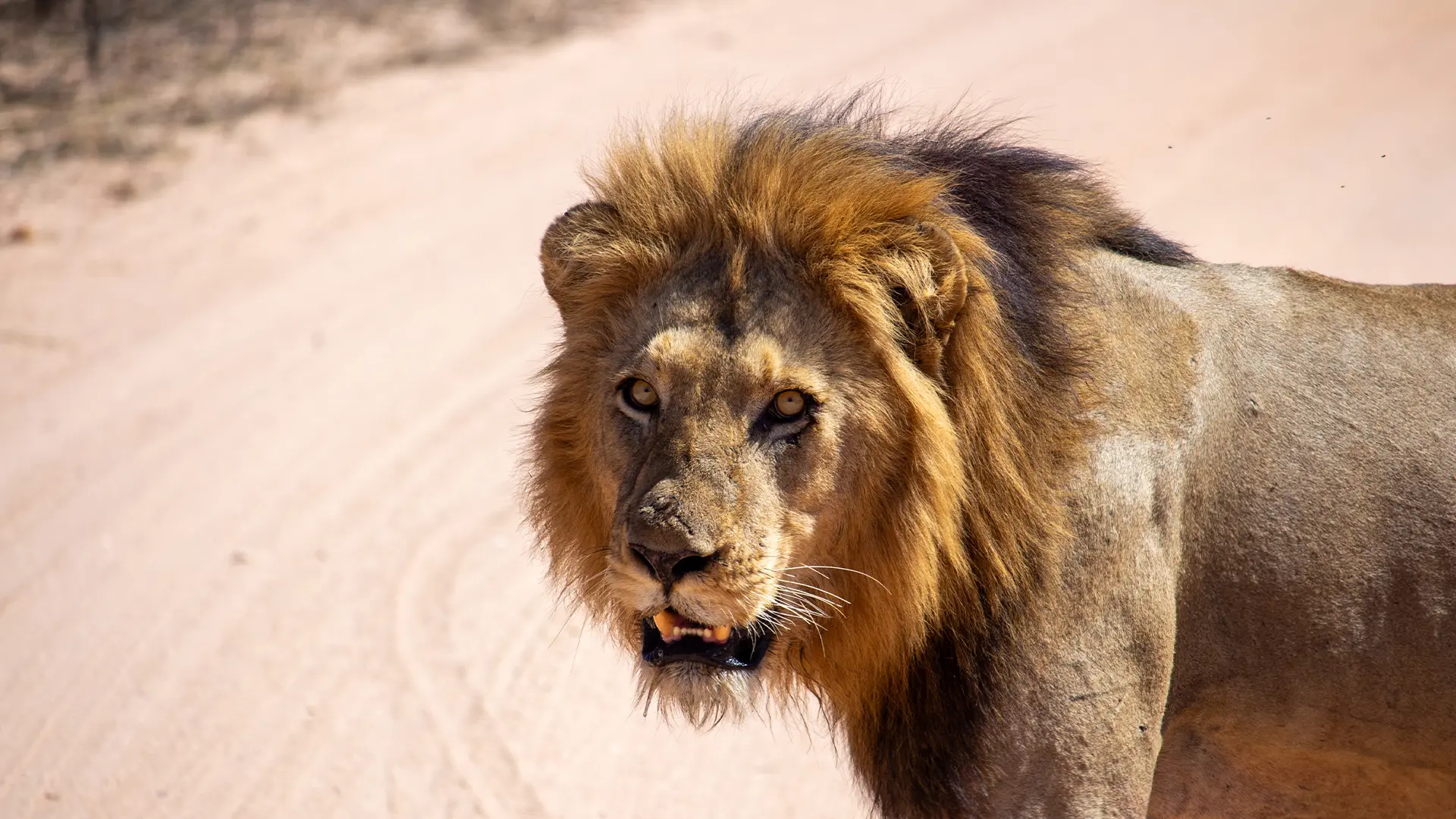

Lions in Kruger National Park are one of Africa's most iconic wildlife attractions. As the largest cat species on the continent and a key member of the "Big 5," the African lion commands attention, awe, and respect. For many, spotting a lion in the wild is the pinnacle of a safari experience. If you're planning a trip to Kruger or simply curious about these majestic predators, this guide will answer your questions about where to see lions in Kruger, how many there are, and what to expect from their behavior in the park. To turn your dreams into reality, check out our Kruger National Park Safari Packages for expert-led tours and unforgettable experiences.
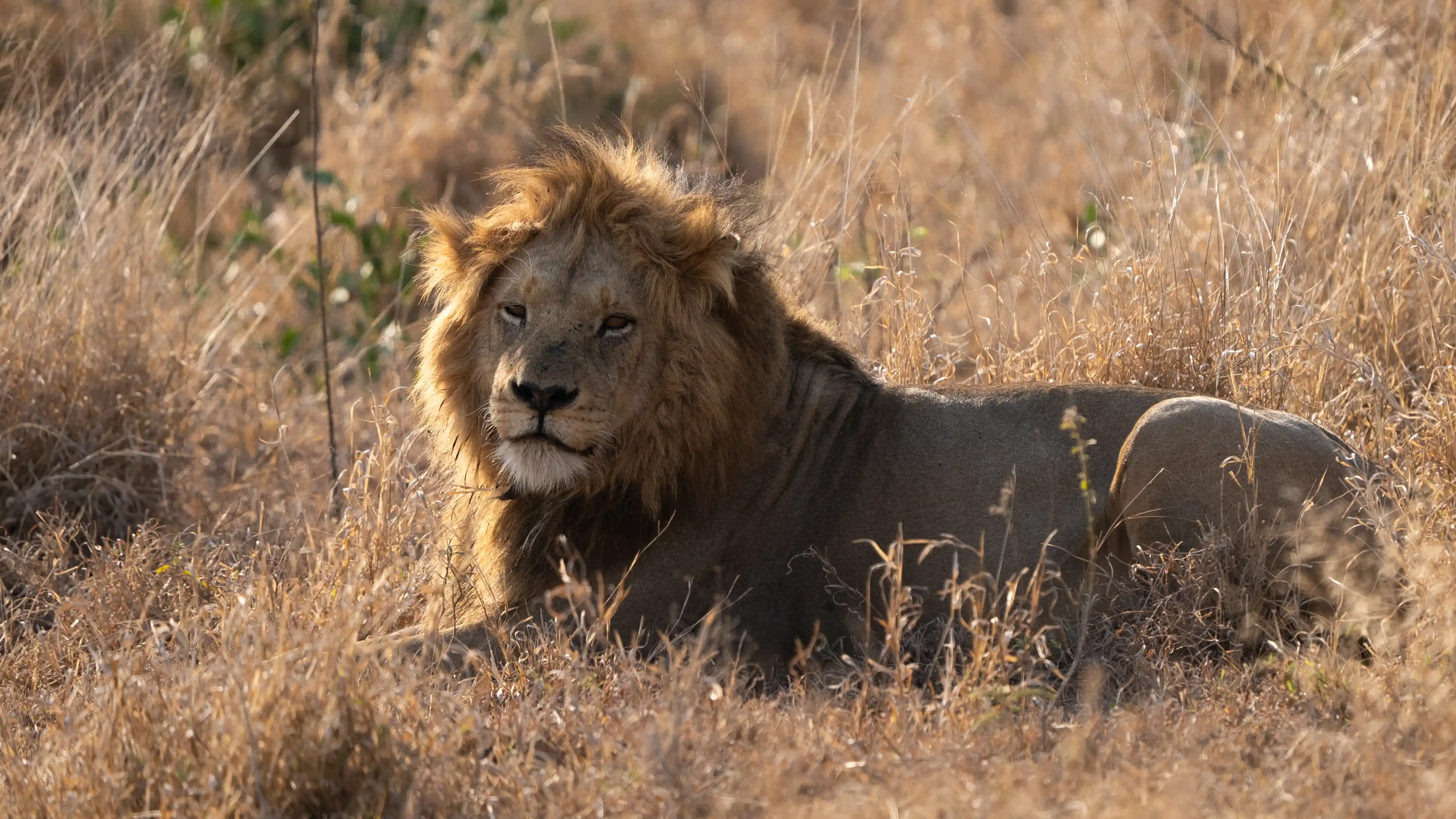
Male African Lion lying close to road in Kruger National Park
Kruger National Park is home to one of the largest wild lion populations in Africa. As of the most recent estimates, there are approximately 1,600 to 1,800 lions in Kruger, spread across various prides and territories.
This relatively stable population benefits from Kruger’s vast protected area of over 19,000 km², abundant prey species, and a mix of savanna, bushveld, and riverine habitats. The lions here live largely undisturbed by human interference, which gives visitors a unique opportunity to observe natural behaviors like hunting, mating, and territorial disputes.
Lions are territorial, so their movements and sightings are relatively consistent within well-established areas. While you can see lions anywhere in Kruger, some regions have a higher chance of encounters due to lion density and prey availability. Increase your chanes of seeing Lion on our All Inclusive Kruger National Park Safari Packages and start planning your adventure today.
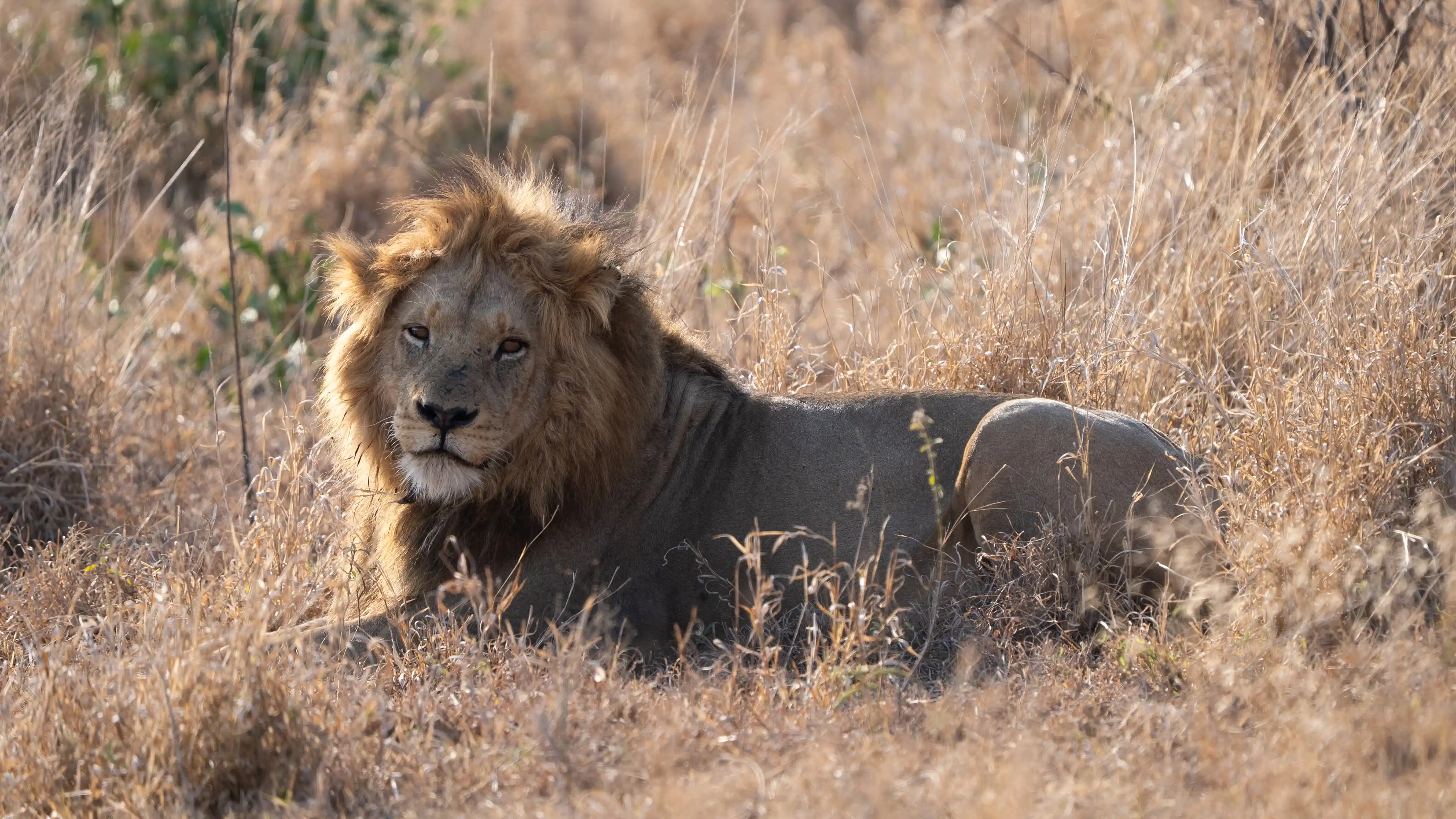
Fully body view of Male Lion resting in the bushveld.
Lions are social cats, typically living in prides of 3–15 individuals, though super prides exceeding 20 have been observed. Your lion sighting could range from:
They spend up to 20 hours a day resting, so don’t be surprised if you find them snoozing under trees or bushes. But if you're lucky, you might catch them on the move — especially early in the morning or near sunset, when they’re more active.
Lions often stick to roads, especially in the cooler hours, so keep your eyes open near bends and river crossings. Listening for alarm calls from impalas or baboons can also lead you to an active sighting.
If you’re on a self-drive safari, witnessing these behaviors is unforgettable. Guided safaris often add context to sightings, pointing out tracking signs, age estimates, and pride dynamics.
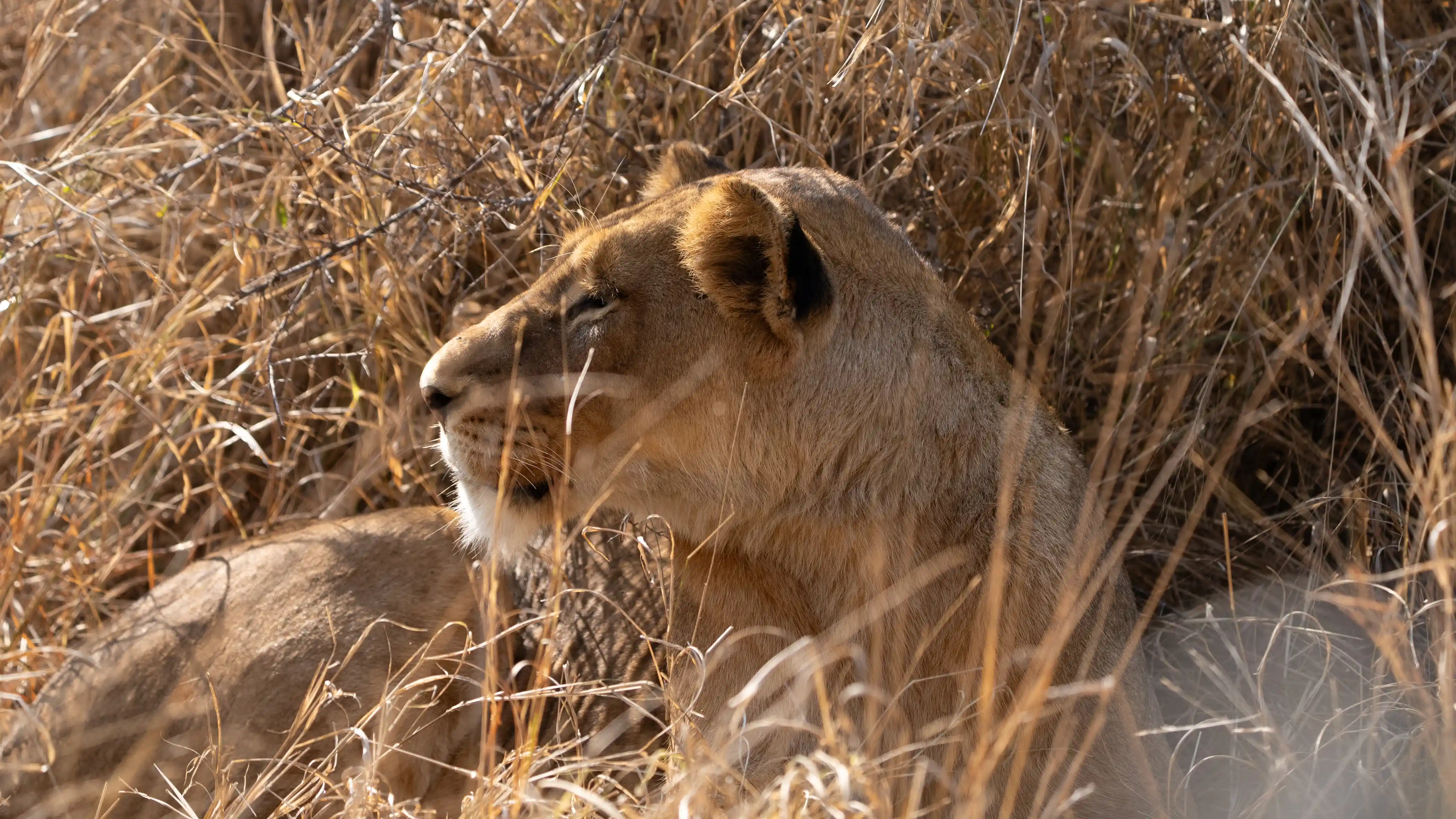
Lioness looking alert while scanning the area in Kruger National Park
Learn more about Kruger weather to increase your chances of spotting lions during your visit.
Pro tip: Get out early — the cool morning hours increase your chances of seeing lions walking, hunting, or interacting socially.
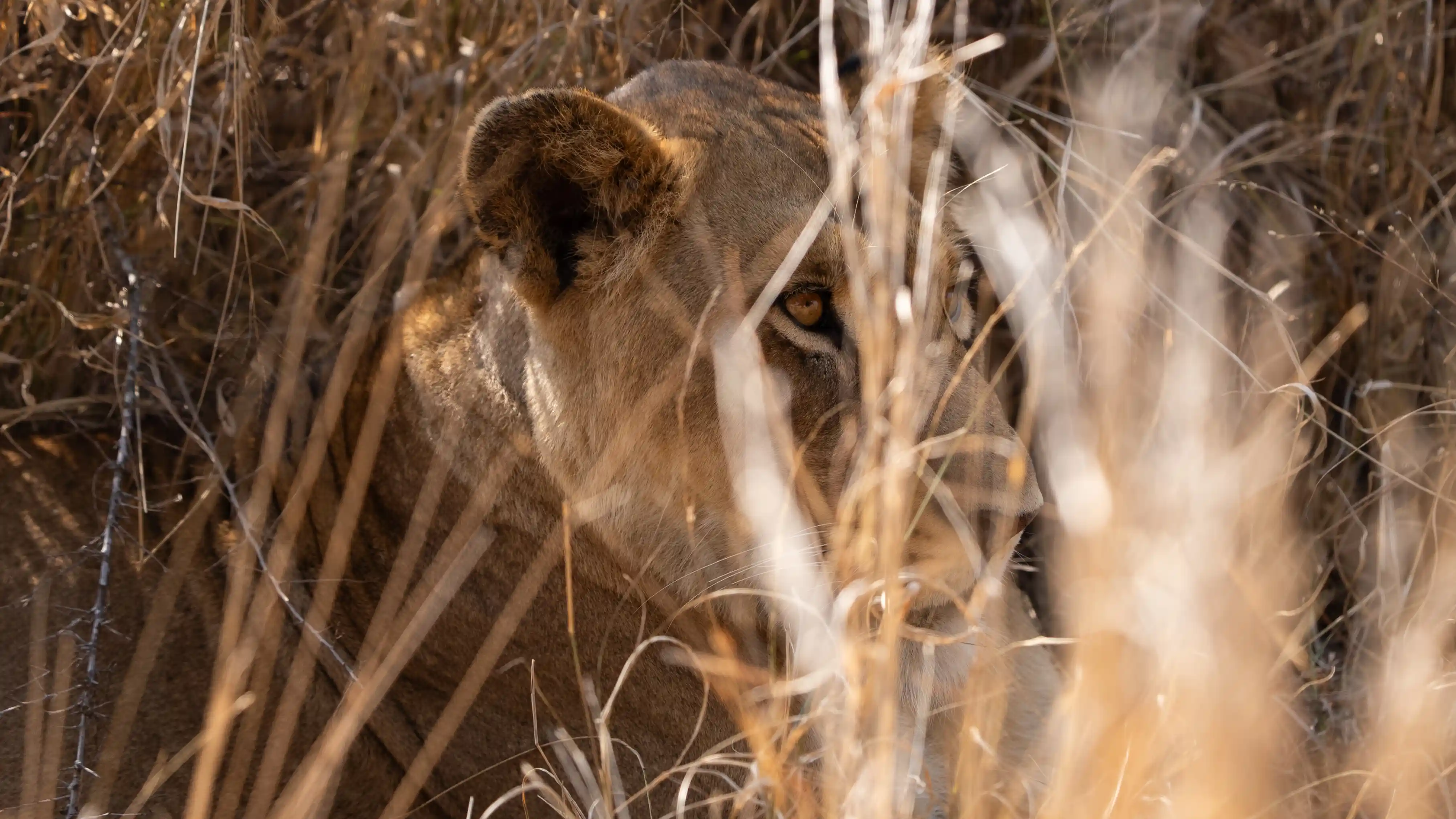
Lioness partially hidden in tall grass during a safari in Kruger National Park
Lions in Kruger National Park are more than just a tick off your Big Five list — they are living symbols of African wilderness. With their dramatic roars, close-knit prides, and commanding presence, they represent everything that makes Kruger an unforgettable safari destination. Ready to experience it yourself? Browse our Kruger National Park Safari Packages and start planning your adventure today.
Whether you’re a first-time visitor or a seasoned safari-goer, encountering a lion in the wild is always special. By understanding where and when to look, and what behaviors to expect, you greatly increase your chances of having an awe-inspiring sighting.